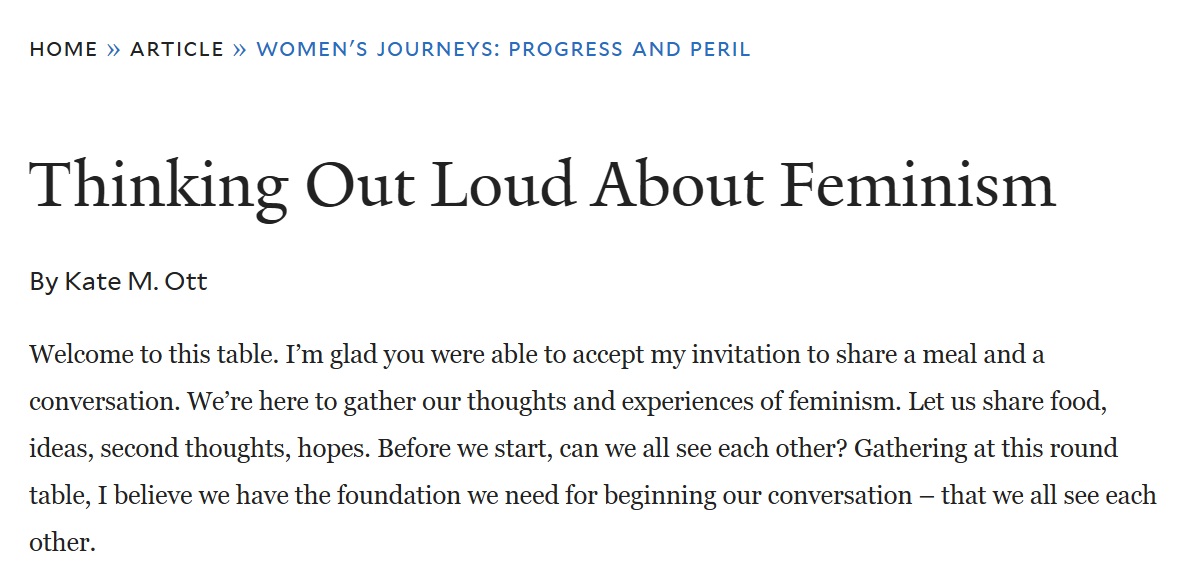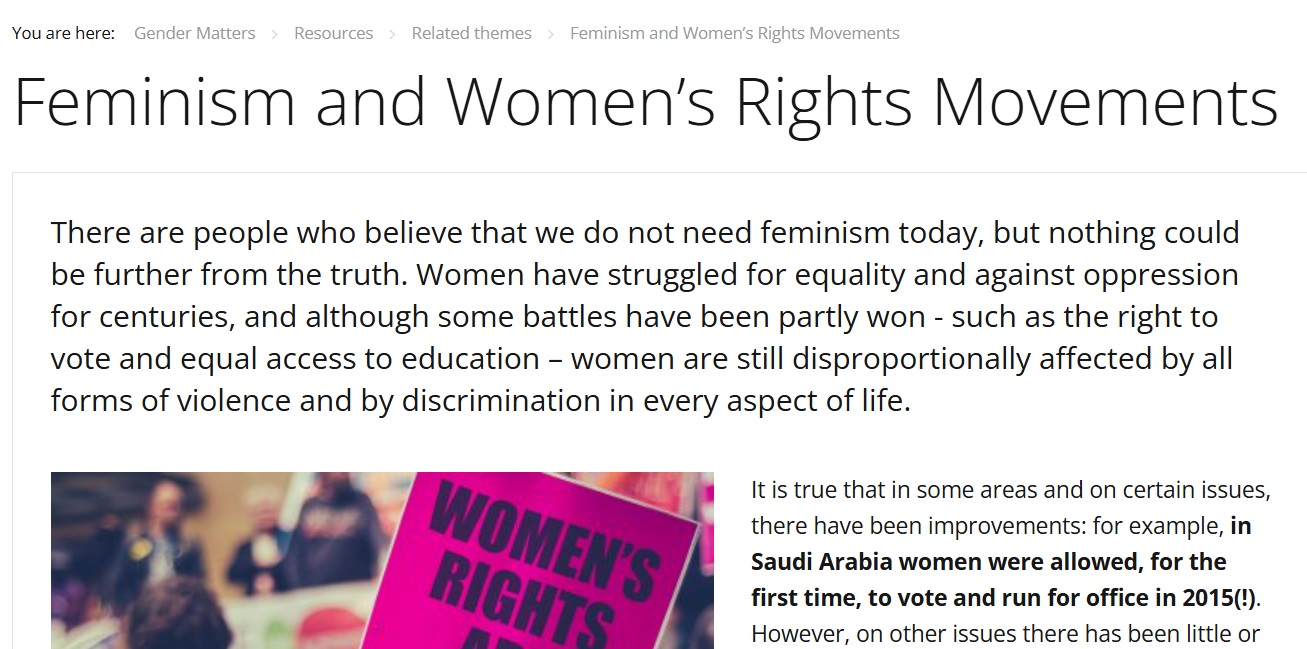Thinking Out Loud About Feminism

Through a fictional roundtable dialogue, this article explores diverse feminist perspectives, internal tensions, and the profound impact of issues like race, class, and gender identity on contemporary feminism.
Related Topics
This article explores the diversity and complexity of contemporary feminism through a fictional “roundtable dialogue.” Author Kate M. Ott invites six female friends with different backgrounds and perspectives, and through their conversation, demonstrates the multiple voices and ongoing tensions within the feminist movement.
Key Viewpoints and Intellectual Confrontations
Equality and Choice: Participant B represents early feminist views, emphasizing the pursuit of “equality” with men through education and entering traditionally male occupations. L raises questions, asking whether women choosing traditional housewife roles means failure. This reflects women’s struggle between pursuing personal choice and meeting group expectations.
Race and Class Critique: T (as a feminist) and M (representing Global South perspectives) offer sharp criticism of mainstream “white, First World” feminism. They point out that without considering race, poverty, and global inequality, feminism could become irrelevant or even inadvertently exacerbate oppression. M emphasizes that true feminism requires the privileged to “get less” and see differences clearly.
Gender Identity and Queer Theory: J represents a queer feminist perspective, proposing that gender is a “performance” and that “women” and “female bodies” should not be the only connecting threads of the movement. She calls on feminists to think about how the movement should proceed when gender is no longer binary.
Religion and the Church: Both the author and T explore from their respective faith backgrounds the role that churches and religion play in gender oppression, calling for advancement of gender justice within faith communities.
Author’s Summary and Prospects
As the initiator and summarizer of the dialogue, author Kate M. Ott acknowledges her privileges as a “white, American, educated, upper-class woman.” She believes feminism should be a “justice-seeking praxis” that begins with women’s real-life experiences but must transcend simple “equality” models. She emphasizes that future feminist movements should not try to eliminate gender, racial, and cultural differences, but should seek justice “because of our differences.” This is an ongoing dialogue that requires everyone, including those with different opinions, to sit down, see each other, share, and listen.
This article was summarized and written by Gemini based on “Thinking Out Loud About Feminism.”
Related Articles

Feminism and Women's Rights Movements
This article provides an in-depth exploration of the definition of feminism, its historical development (including three waves and cyberfeminism), and its importance in contemporary society. It details the various forms of gender discrimination and explains why specific women's rights are necessary, emphasizing that women's rights are human rights.

女性主义与妇女权利运动
本文深入探讨了女性主义的定义、历史发展(包括三次浪潮和网络女权主义),以及其在当今社会中的重要性,并详细解释了性别歧视的多种形式以及为什么需要专门的妇女权利,强调妇女权利就是人权。

大声思考女性主义
通过一场虚构的圆桌对话,本文探讨了女性主义的多样化视角、内部的张力,以及种族、阶级、性别认同等议题对当代女性主义的深刻影响。
Support Our Work
If this content has been helpful to you, please consider supporting us to continue curating quality feminist resources
☕ Buy me a coffee讨论与评论
分享您对这篇文章的看法和感受
加入讨论
分享您对这篇文章的看法和感受
加载评论中...